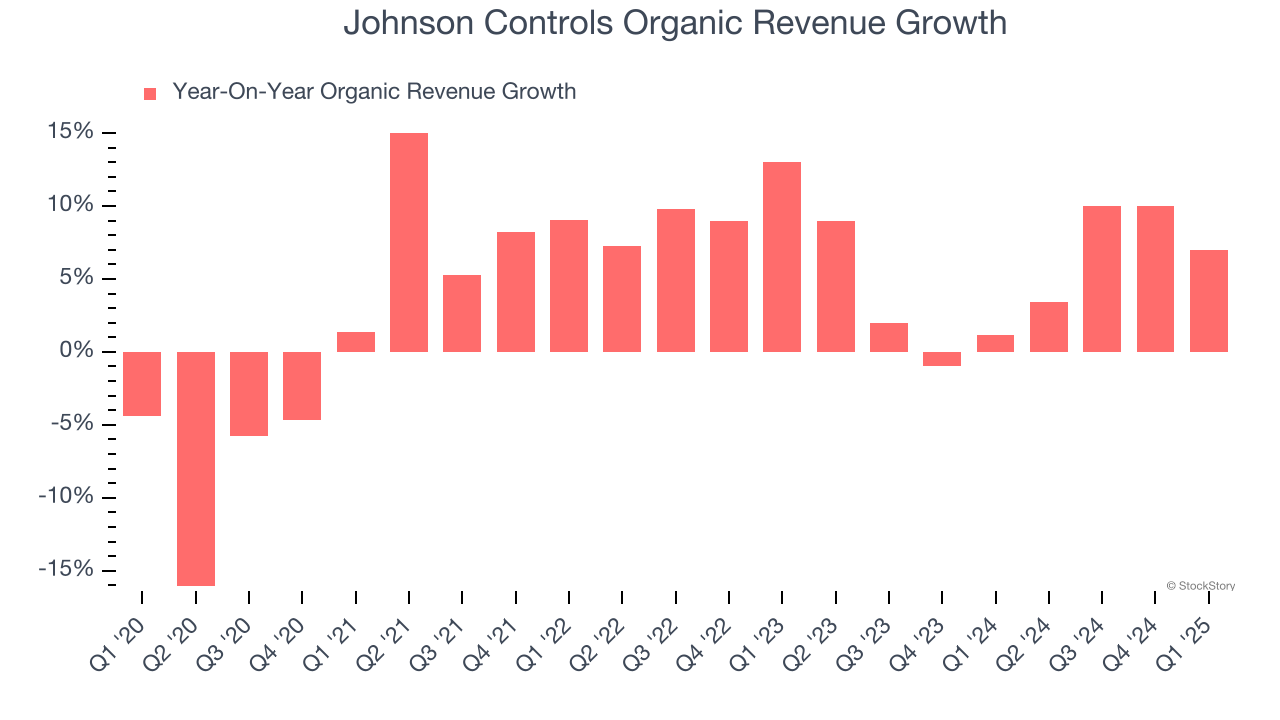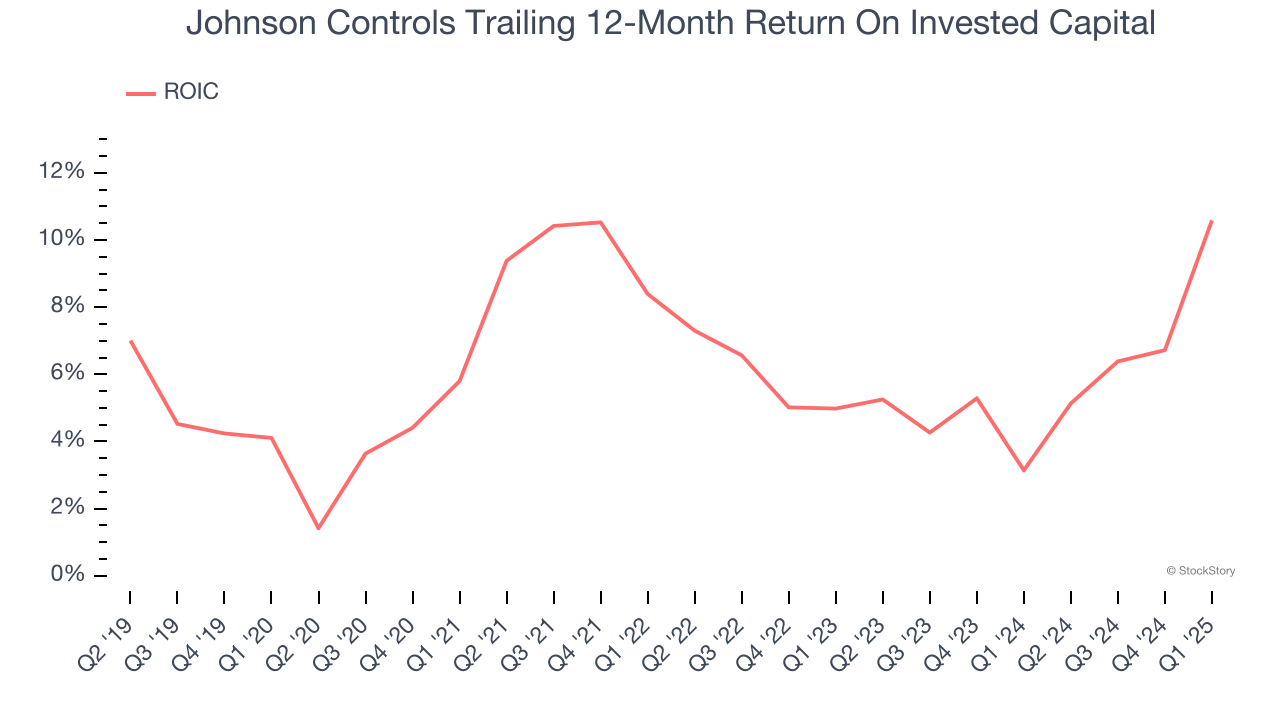
Since July 2020, the S&P 500 has delivered a total return of 97.3%. But one standout stock has more than doubled the market - over the past five years, Johnson Controls has surged 218% to $106.12 per share. Its momentum hasn’t stopped as it’s also gained 34.9% in the last six months thanks to its solid quarterly results, beating the S&P by 28.1%.
Is now the time to buy Johnson Controls, or should you be careful about including it in your portfolio? See what our analysts have to say in our full research report, it’s free.
Why Do We Think Johnson Controls Will Underperform?
Despite the momentum, we're sitting this one out for now. Here are three reasons why you should be careful with JCI and a stock we'd rather own.
1. Slow Organic Growth Suggests Waning Demand In Core Business
Investors interested in Commercial Building Products companies should track organic revenue in addition to reported revenue. This metric gives visibility into Johnson Controls’s core business because it excludes one-time events such as mergers, acquisitions, and divestitures along with foreign currency fluctuations - non-fundamental factors that can manipulate the income statement.
Over the last two years, Johnson Controls’s organic revenue averaged 5.2% year-on-year growth. This performance was underwhelming and suggests it may need to improve its products, pricing, or go-to-market strategy, which can add an extra layer of complexity to its operations. 
2. Projected Revenue Growth Is Slim
Forecasted revenues by Wall Street analysts signal a company’s potential. Predictions may not always be accurate, but accelerating growth typically boosts valuation multiples and stock prices while slowing growth does the opposite.
Over the next 12 months, sell-side analysts expect Johnson Controls’s revenue to rise by 4.1%. While this projection suggests its newer products and services will fuel better top-line performance, it is still below the sector average.
3. Previous Growth Initiatives Haven’t Impressed
Growth gives us insight into a company’s long-term potential, but how capital-efficient was that growth? A company’s ROIC explains this by showing how much operating profit it makes compared to the money it has raised (debt and equity).
Johnson Controls historically did a mediocre job investing in profitable growth initiatives. Its five-year average ROIC was 6.6%, somewhat low compared to the best industrials companies that consistently pump out 20%+.

Final Judgment
Johnson Controls doesn’t pass our quality test. With its shares outperforming the market lately, the stock trades at 27.4× forward P/E (or $106.12 per share). At this valuation, there’s a lot of good news priced in - we think there are better opportunities elsewhere. Let us point you toward a fast-growing restaurant franchise with an A+ ranch dressing sauce.
Stocks We Would Buy Instead of Johnson Controls
Donald Trump’s victory in the 2024 U.S. Presidential Election sent major indices to all-time highs, but stocks have retraced as investors debate the health of the economy and the potential impact of tariffs.
While this leaves much uncertainty around 2025, a few companies are poised for long-term gains regardless of the political or macroeconomic climate, like our Top 9 Market-Beating Stocks. This is a curated list of our High Quality stocks that have generated a market-beating return of 183% over the last five years (as of March 31st 2025).
Stocks that made our list in 2020 include now familiar names such as Nvidia (+1,545% between March 2020 and March 2025) as well as under-the-radar businesses like the once-small-cap company Exlservice (+354% five-year return). Find your next big winner with StockStory today.
StockStory is growing and hiring equity analyst and marketing roles. Are you a 0 to 1 builder passionate about the markets and AI? See the open roles here.






